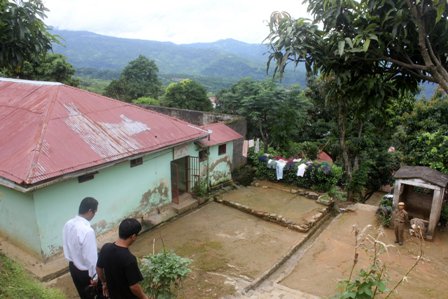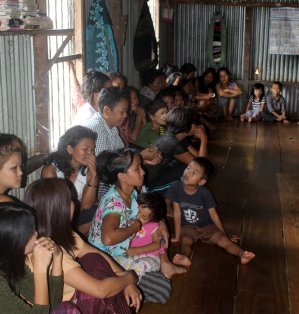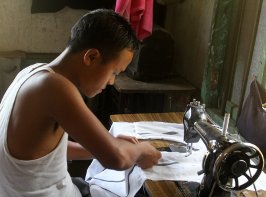Mizoram, India: making HIV prevention and care
a reality in prisons

Forty per cent of the inmates of Aizawl's central jail are injecting drug users. The jail's capacity of 410 is at present over utilized with more than 582 inmates. These include some 62 women and seven small children who stay with their mothers. Most of the inmates have been sentenced for petty theft and/or drug and alcohol peddling with varying sentences. Among the women inmates, some are from Myanmar, mostly arrested for drug trafficking. They did not have any contact with their families since their arrest.

With the shift to injecting drug use and the accompanying sharing of needles, HIV started to spread in the drug users' community. The HIV prevalence among injecting drug users in Mizoram has been oscillating around 5 per cent with peaks up to 10 per cent. Usually, drug users engage in drug peddling to sustain their drug use and therefore they end up in prison, when caught. Also, even and when they have served their sentence they often relapse because of their drug use. Readmission rates in jails are high.

But medical facilities are limited. A doctor attends every second day a dispensary, where basic treatment can be provided. The next hospital is 40 minutes away depending on the traffic on Aizawls' narrow and busy roads. Inmates need to wear their prison uniform and handcuffs, if they need to go to the hospital, for example, for a simple blood test. Despite the high rate of drug users, no drug treatment is available to inmates.
Knowing about high-risk behaviours in prisons, that can lead to HIV and other health risks, UNODC together with the prison administration and the Mizoram States Control Society have now agreed to start HIV prevention in Mizoram's prisons building on the expertise of SHALOM, a local NGO that has worked for many years in the central jail of Aizawl.
The new initiative will provide a capacity-building package that includes (i) training of prison staff, starting with executive and supervisory staff of the central jail and five district jails and expanding to prison inmates, (ii) training of master trainers of inmates with a long-term sentence who can guide new inmates and (iii) the provision of staff support to the central jail uniform of a doctor, outreach workers and counsellors. The initiative will also focus on how to make services, such as Antiretroviral Therapy (ART), Integrated Counselling and Testing Centre (ICTC), Oral Substitution Treatment (OST), and a Tuberculosis (TB) dot centre accessible and /or available to prison inmates living with HIV by linking up with the respective state institutions. It will also provide for individual as well as family counselling also taking into account that prisoners will - once released - be part of the community again and will require the same care, treatment and support.
With this initiative, the State of Mizoram makes laudable progress in making a reality the fulfillment of international standards for treatment of prisoners, including the right to health care and the right to equity.
UNODC's work in HIV prevention in prisons is possible thanks to the contribution of the Swedish Government.
Written by Cristina Albertin, UNODC Regional Representative South Asia on the occasion of her recent visit to Aizawl where she participated in the launch of the HIV prevention training in prisons.